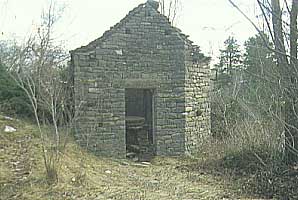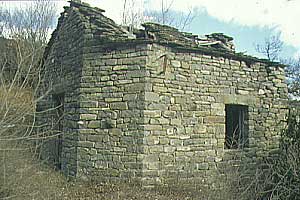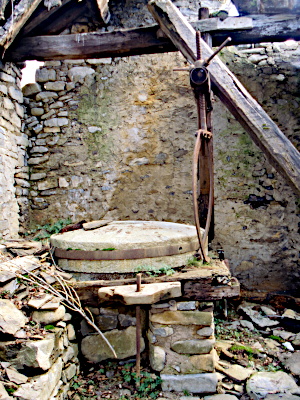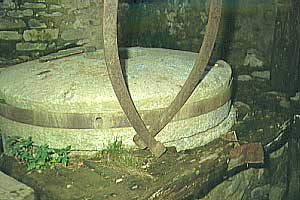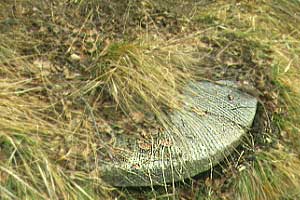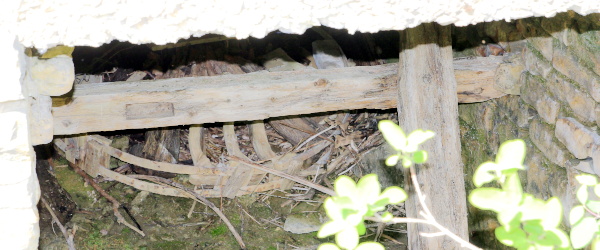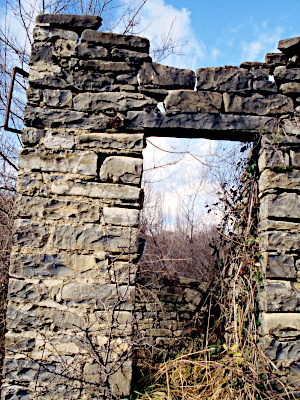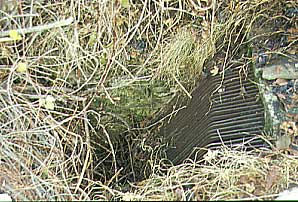Original Spanish by Luis Bara
He leido su articulo sobre el molino en Aso de Sobremonte.
Desearia efectuarle algunas precisiones con el objeto de cumplimentar su información.
Mi nombre es Luis Bara y procedo de ese pueblo, Aso, donde nací,
pase mi infancia y todavia voy con mucha asiduidad.
Mis antepasados igualmenta habian nacido y vivido en ese pueblon en la casa denominada Olivan,
cultivando las tierras y cuidando del ganado.
Mi abuelo paterno, Santos Bara, de acuerdo con el ayuntamiento de Aso,
contruyeron una acequia hasta una balsa ubicada en el lugar que Vd. describe.
Al lado se construyó un pequeño edificio en el que habia una tajadera
sobre un canal que comunicaba por un lado con la balsa y por el otro con
una tuberia que descendia hasta dos edificios situados unos metros mas
abajo totalmente independientes. Uno de esos edificios era el molino
que Vd. describe, y cuyo objeto era moler el trigo que se producia
en el pueblo destinado a hacer el pan, pues cada casa tenia su amasaderia
donde efectuaba el pan para su consumo, Hay que tener en cuenta que hasta
epoca bastante reciente no habia carretera, y por tanto estos pueblos
eran bastante autonomos.
El segundo edificio contenia una central hidraulica propiedad de mi abuelo,
destinada a producir electricidad, que a traves de una linea electrica a
baja tension, abastecia a la casa Olivan para las luminarias y estufas
electricas. El resto del pueblo en el que no habia luz, se iluminaba
las calles a cambio del mantenimiento de la acequia y balsa.
Todo esto que le cuento lo he vivido personalmente, ya que
recuerdo cuando yo era pequeño, los paseos con mi padre y mi
madre al atardecer para ir a dar la luz, que consistian en caminar
del pueblo a la central, primero arriba para manualmente levantar
la tajadera y permitir que el agua pasara, y luego al edificio inferior
para comprobar la tension en los voltimetros, limpiar las dinamos del alternador
etc. Por la noche en la casa, el ultimo que se iba a dormir, apagaba
la luz mediante un artilugio que desde la casa hacia bajar la compuerta de la central.
Luis Bara
Translation
I've read your article about the mill in Aso de Sobremonte.
I would like to complement your information with some additional information.
Aso is the village where I was born. I lived there when I was young and I
still love to return as many times as possible. My ancestors, living in Casa Oliván,
spent there their lives farming and looking after the cattle.
My father's father, Santos Bara, agreed with the local authority to
build a balsa (mill pond) at the exact place mentioned earlier on this page.
Next to this reservoir a small construction was erected to house a valve. A tube brings
the water to the two buildings some meters down the hill.
One of those was the flour mill
where the corn of the village was processed. At that time each family made its own bread.
We must not forget that until recently there was no paved road and people in this and
similar villages needed to be self-supporting.
The second construction was the hydro-electric station of my grand-father.
It produced electricity and a line carried the low tension to the Casa Oliván
where it powered the lights and stoves. The rest of the village had no light, but the
streets were illuminated. In return, people of the village did maintenance of the
water supply channel and the mill pond.
I'm telling you this from my own memory. I remember the evening walks
when I was a child. With my father and mother from the village to the power station
to switch on the electricity. First to the construction near the reservoir to lift the
valve. Then down to the generator house to check the voltage meters, clean the alternator
and do some other maintenance when needed.
Back at home the last person who was going to bed had the task of shutting down the
lights. A clever contraption made it possible to close the valve from the house.
Luis Bara


